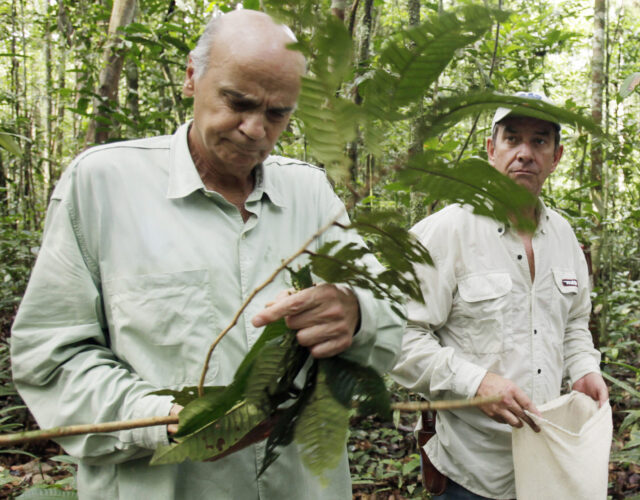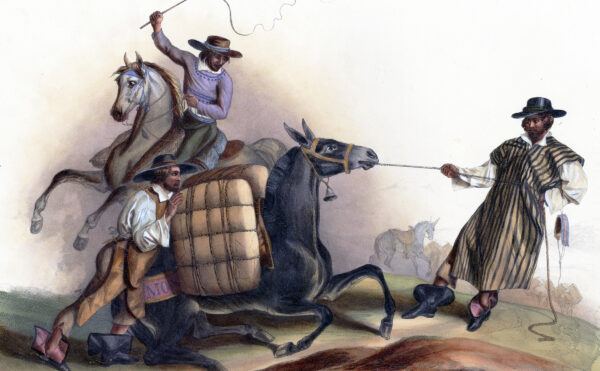Donald R. Kirsch and Ogi Ogas. The Drug Hunters: The Improbable Quest to Discover New Medicines. Arcade, 2017. 318 pp. $25.
In 1856 William Henry Perkin created the first synthetic dye, mauve, using organic compounds found in coal tar. Other manufacturers quickly followed with new colors, and the synthetic dye industry was born. In the 1880s German researchers discovered that many of these synthetic dyes were biologically active. Executives at one of the large German synthetic-dye producers, Friedrich Bayer and Company, decided to spin off their chemistry expertise into new areas and in 1888 established the Bayer Pharmaceutical Research Group. The researchers began by adding small molecules known as acetyl groups to plant-derived compounds. Arthur Eichengrün, Bayer’s head chemist, developed two new compounds for testing, which were synthesized by his junior chemist Felix Hoffmann. But Heinrich Dreser, the head of pharmacological research, concluded that his budget could support the development of only one. He selected diacetylmorphine, which he believed would represent the future of the company.
The rejected compound was acetylsalicylic acid, and Dreser’s decision could have spelled the end for that molecule. Eichengrün, however, believed in the compound’s potential. Salicylic acid, derived from the bark of white willow trees, had long been known to provide pain relief and reduce fever and inflammation, but it also had discomforting side effects, such as nausea and tinnitus. With a little molecular tweaking, Eichengrün surmised, salicylic acid could be transformed into a viable medicine. He furtively arranged for a set of clinical trials in humans. With positive preliminary data in hand Eichengrün then convinced Carl Duisberg, the head of pharmaceutical research, to commit resources to test the rejected compound alongside diacetylmorphine. Both compounds passed human trials. In 1899 Bayer announced the trade name for Eichengrün’s almost-missed drug: Aspirin. The trade name for Dreser’s choice: Heroin.
The development of aspirin is one of many drug discoveries relayed in The Drug Hunters. Donald R. Kirsch, a drug hunter who has worked at a number of large pharmaceutical firms, and science writer Ogi Ogas provide a lively account of some of the most important drug discoveries ever made. They explore the myriad sources of new drugs (from plants and soil bacteria to synthetic dyes and genetic engineering), the historical and cultural contexts that shaped their discovery, and the critical role played by serendipity.
The Drug Hunters takes the reader from our prehistoric ancestors’ haphazard—and generally hazardous—discovery of medicinal plants to the contemporary drug-discovery methods of the pharmaceutical industry. As part of their historical survey the authors address related issues, such as the rise of drug regulation, the standardization of drugs, and the emergence of the science of pharmacology.
Although the techniques of drug discovery and development have become more sophisticated, the search for new medicines still remains more of an art than a science, one involving the trial-and-error screening of numerous compounds. The German immunologist Paul Ehrlich, in what he called “the four G’s” of drug hunting, emphasized that the discovery of new drugs required not only Geld (money), Geduld (patience), and Geschick (ingenuity) but also a substantial amount of Glück (luck).
The book’s chapters are largely structured around the different sources, or “libraries,” of medicine, with the earliest sources being plants. Evolutionary pressures pushed plants to develop chemical defenses against insects and other threats, with some of the defenses having physiological effects on humans. Opium was among the first plant-derived drugs discovered by humans. Others discussed in the book include quinine, a treatment for malaria derived from the bark of the cinchona tree, and diosgenin, a compound found in wild Mexican yams and a precursor to progesterone, which is used in contraceptive pills.
Friedrich Wöhler’s synthesis in 1828 of the organic compound urea using only inorganic reactants created the discipline of synthetic organic chemistry. Interest in the field expanded considerably with the rise of the synthetic dye industry in the late 1850s and the later realization that different chemical compounds produced not only new colors for fabric but potentially new medicines to fight disease. Ehrlich, for example, discovered that aniline dyes stained specific parts of certain types of cells, giving him the idea of developing a drug that would selectively target only the pathogen, a “magic bullet.” On this basis he screened hundreds of dye derivatives, eventually creating the first synthetic antibacterial drug and first effective cure for syphilis, which appeared in 1910 under the trade name Salvarsan.
The search for new antibiotics led researchers to look to a very different source for new drugs: dirt. Penicillin, discovered by Alexander Fleming in 1928 but not widely available until the final years of World War II, comes from a soil-dwelling fungus. In 1943 Selman Waksman and Albert Schatz, while screening soil microbes known as Streptomycetes, discovered streptomycin, the first drug able to cure tuberculosis. These breakthroughs opened the door to the “golden era of antibiotic research” in the late 1940s and early 1950s, giving doctors additional tools to fight off bacterial infections. But such advances were quickly threatened by the development of antibiotic-resistant strains of bacteria. Starting in the 1980s most pharmaceutical companies abandoned antibiotic research because of high research costs and poor financial returns, leaving a major gap in our ability to fight disease.
While plants have provided a rich source for medicines, few drugs have been derived from animals. Until the 1980s diabetes was treated with insulin that came from ground-up pig and cow pancreases, a process perfected in the 1920s. A synthetic form of human insulin became available in 1982 using the tools of genetic engineering, yet another source of new drugs.
In a theme that runs through the book, new medicines are often developed on the basis of luck and happenstance. Treating psychiatric disorders, such as schizophrenia, with chemical compounds became standard practice in the 1950s after a French naval surgeon searching for a more effective anesthetic discovered chlorpromazine. Imipramine, a forerunner to Prozac, was used as an antidepressant only after a Swiss psychiatry professor decided on a whim to test it on depressed patients after it failed to help schizophrenic patients.
Through their historical survey the authors seek to clarify common misconceptions about drug discovery and development, and they address why drugs are expensive, why they have side effects, and why we don’t have treatments for particular maladies. According to the authors, today only about 5% of researchers’ ideas are funded, and of these only 2% become FDA-approved drugs, at a cost of about $1.5 billion per approved drug. On average a successful drug will take more than a decade to develop from the time of its discovery.
Popular perceptions of drug discovery view it as a straightforward process of scientific engineering, such as designing and building a new model of car. That analogy is more akin to how pharmaceutical companies develop copycat versions of existing drugs—molecularly tweaking an already well-understood compound. The discovery of new drugs, however, more closely resembles a product of artistic creativity, such as a Hollywood film. There is no guarantee of success.
“The reason,” the authors write, “is as simple as it is profound: there are still no clear scientific laws, engineering principles, or mathematical formulae that can guide an aspiring drug hunter all the way from idea to product.”




